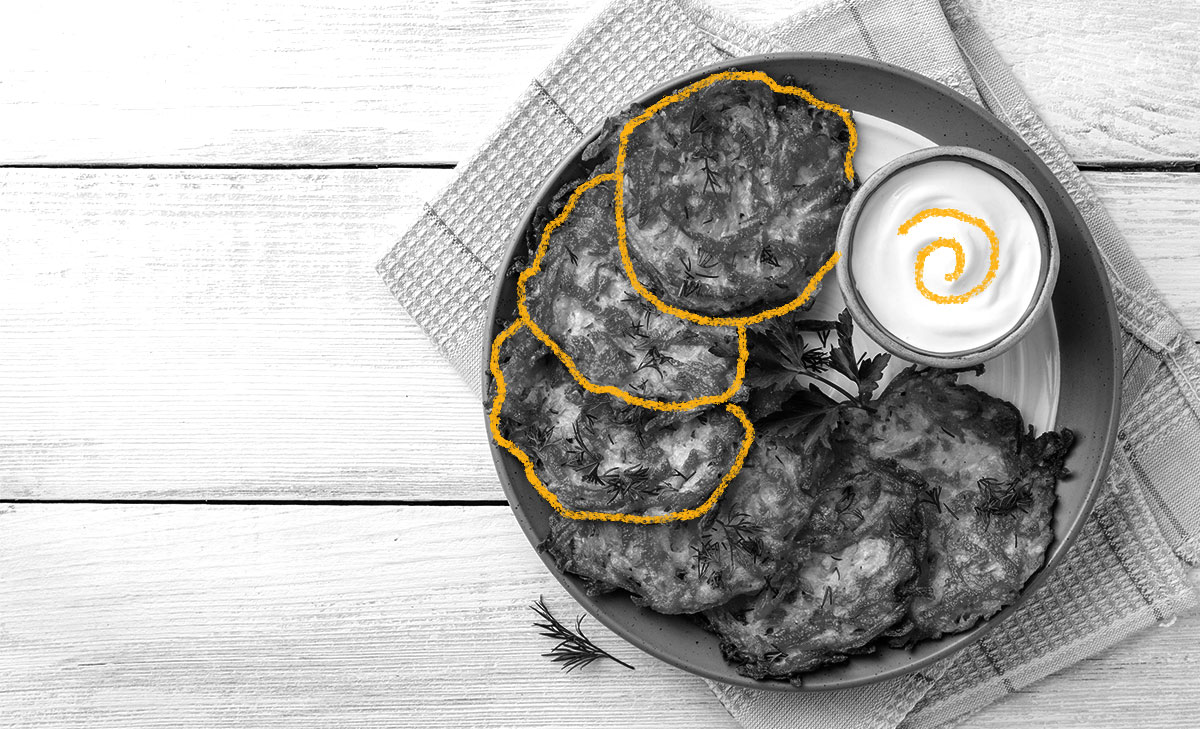In honor of the start of Hanukkah this evening, we are taking a look at the history behind latkes. These crispy, fried potato pancakes are eaten during Hanukkah as a reminder of the miracle of the oil. In 164 BCE, Judah Maccabee and his followers overthrew the Syrian Greek king. When they rededicated the temple, they only had enough ritual oil for one day, but it miraculously lasted for eight. Centuries after this event, people began to celebrate it by eating foods cooked in oil. By why latkes? That’s where the story of Judith comes in. Judith was a beautiful widow who fed Holofernes (who was holding Bethulia under siege) many levivot (salty pancakes filled with cheese). He became so thirsty that he drank large amounts of wine until he passed out, and Judith chopped off his head. No one is quite sure how the two became conflated, but they did, and by the Middle Ages, it was common for Jews living in Italy to celebrate Hanukkah by eating cheese pancakes. Potatoes entered the mix for a very practical reason: potatoes were cheap, and poverty among Eastern European Jews was all too common, so potatoes became the key ingredient in latkes (the Yiddish word for pancakes). Hanukkah is a minor holiday in the Jewish faith and the Talmud decrees that there is to be no fasting during it. Latkes – with their rich history and decadent taste – are both a treat and a way to commemorate the events being celebrated, so they continue to be enjoyed during Hanukkah each year.

Your go-to guide for weird history facts
Subscribe to the FREE daily email that makes learning about history fun.


